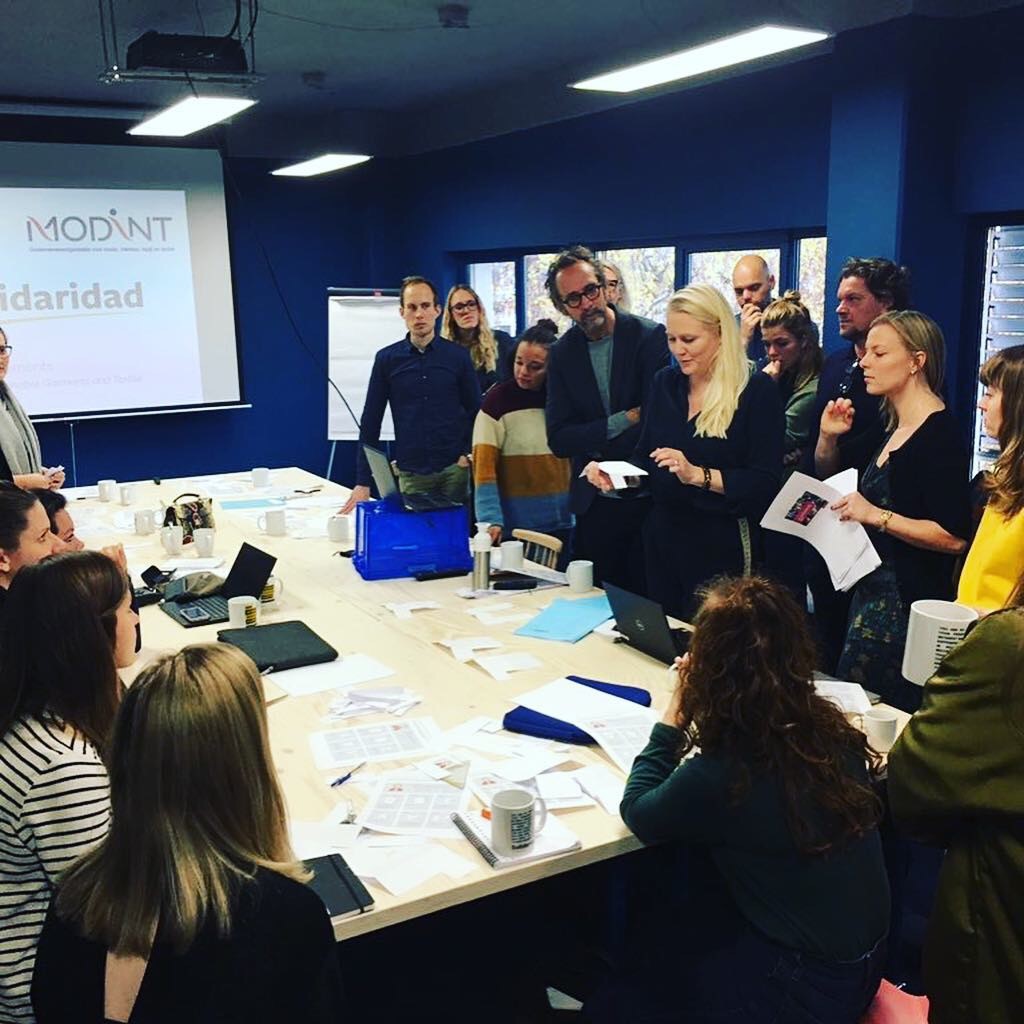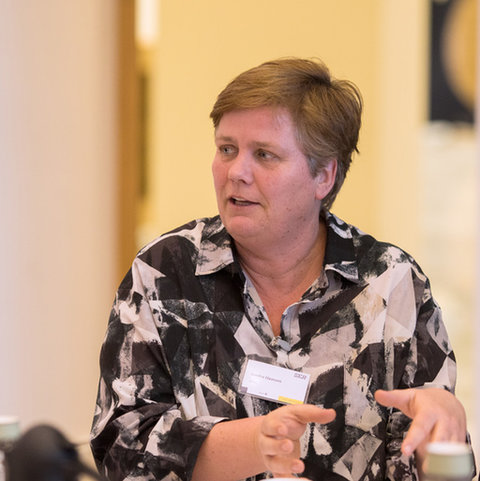Outlook
Companies that have been signatories to the Agreement from the outset are expected this year to publish individually what the greatest risks are in their chain and how they deal with those risks.
The problems in the textile chain are large, complex and intractable. The Dutch Agreement for Sustainable Garments and Textile has a limited impact on the global market. However, the Agreement demonstrates that companies can achieve structural changes if they make sustainable decisions. By conducting sound due diligence, they discover where the risks are located in their supply chain and they can address problems in factories. They can do this, for example, by changing their purchasing practice and by engaging in discussions with suppliers about improvements.
Communication about risks and action
In 2019, the parties to the Agreement are embarking on the following step together, building on the knowledge acquired over the past years. Companies that have been signatories to the Agreement from the outset are expected this year to publish individually what the greatest risks are in their chain and how they deal with those risks. In doing this, they will also set out the dilemmas they have faced and their struggles. The reason for taking this step is the conviction that transparency helps to stimulate change and to raise awareness in the entire sector and among consumers.
Once again, there are various training courses on the agenda in 2019, for example on the living wage, gender, and purchasing practices.
Interim evaluation
In 2019, an interim evaluation will consider how the Agreement has been working up to now. An independent external evaluator will report on the extent to which the Agreement is on the right path to achieve the Agreement’s objectives. The evaluator is asked to make recommendations on how cooperation under the Agreement and its approach can be strengthened over the next 2 1/2 years in order to achieve the common goals.
Furthermore, the OECD is looking at the extent to which the Dutch Agreement, the German Partnership, and the Sustainable Apparel Coalition contribute to the OECD guidelines.
Both reports are expected in the course of 2019. The recommendations will be very valuable for improving the Agreement further.
Workshop Solidaridad en Modint
Tips voor verduurzaming inkooppraktijk

Due diligence begint met het in kaart brengen van de risico’s. Maar wat is de volgende stap? Solidaridad, Modint en het convenantsecretariaat organiseerden in 2018 twee workshops waarin bedrijven concrete tips kregen om hun inkooppraktijk te verduurzamen.
‘Bedrijven die een risicoanalyse hebben uitgevoerd, willen graag alle issues oplossen die uit de due diligence naar voren komen’, vertelt Tamar Hoek, programmamanager textiel van Solidaridad. ‘Wij gaven ze tijdens de workshops tips om dicht bij huis te beginnen: bij het eigen inkoopproces.’
Sommige maatregelen zijn volgens Hoek relatief eenvoudig en snel te nemen. ‘Stel bijvoorbeeld de uiterlijke datum vast tot wanneer een ontwerp kan worden gewijzigd en hou je daaraan. Het is begrijpelijk dat bedrijven iets wat trendy is zo snel mogelijk in de winkel willen hebben, maar dit kan betekenen dat leveranciers, en dus de mensen in de fabriek, heel veel moeten overwerken. Daar kun je als bedrijf dus iets aan doen.’
Op verzoek van Solidaridad en Modint kwamen de deelnemers aan de workshops per bedrijf met z’n tweeën: een MVO-manager én een inkoper. ‘Beiden hebben binnen hun bedrijf verschillende doelstellingen, daarom is het goed om met hen samen in gesprek te gaan. Dankzij de workshops hebben wij een beter beeld gekregen van hoe het er intern aan toe gaat bij bedrijven. En van de deelnemers hebben wij veel positieve reacties gekregen. De bijeenkomsten hebben binnen bedrijven echt wat los gemaakt.’ ■
Sandra Claassen, directeur Arisa:
‘Voor transparantie is lef nodig’

Voor de non-gouvernementele organisatie Arisa (voorheen Landelijke India Werkgroep) was het een hele stap om het Convenant voor Duurzame Kleding en Textiel te ondertekenen. Toch heeft Arisa geen spijt gekregen van deelname, al heeft directeur Sandra Claassen haar verwachtingen wel moeten bijstellen.
Hoe kijken jullie tegen de voortgang van het convenant aan?
‘Het heeft in de eerste jaren heel wat voeten in de aarde gehad om de procedures, het proces van due diligence en de monitoring gezamenlijk op te zetten. Wij dachten: als bedrijven met hun plannen van aanpak komen, rollen daar al snel lijstjes met prioriteiten uit en gaan we die samen aanpakken. Maar het ligt allemaal wat ingewikkelder en kost ook tijd. Daardoor hebben we onze verwachtingen bij moeten stellen. Voor veel bedrijven is due diligence nieuw. Het blijkt al een hele inspanning om de eigen productieketen in kaart te brengen en dan moet het analyseren van risico’s nog beginnen.’
Zijn jullie tevreden over de resultaten?
‘Voor de buitenwereld zou je het liefst meteen concrete resultaten en harde cijfers willen presenteren. Maar het begint met onderling vertrouwen en samenwerking. Maatschappelijke organisaties, vakbonden en bedrijven kennen elkaar vaak nog niet. Er zijn vooroordelen over en weer. We spreken elkaars taal niet. Dankzij het convenant leren we elkaar beter kennen en groeit het vertrouwen om samen iets te doen tegen de misstanden in de sector.
Het is boeiend om met bedrijven samen te werken. Eind 2017 zijn we bijvoorbeeld samen met vier kledingbedrijven een project gestart om de arbeidsomstandigheden in spinnerijen in Zuid-India te verbeteren. Door zo’n project komen we als ngo’s, vakbonden en bedrijven meer over elkaar te weten en krijgen we ook respect voor elkaar.
Bedrijven hebben met name kennis van de productieketen. Zij hebben vooral contact met de leveranciers en de directie van bedrijven. Hun informatie is gebaseerd op audits. Ngo’s en vakbonden hebben relaties met lokale partners en weten wat er aan de achterkant van het productieproces speelt. Door die kennis en ervaringen bij elkaar te brengen, kunnen we invloed uitoefenen en mogelijk ook veranderingen op gang brengen. Wij kunnen bedrijven bijvoorbeeld helpen om aan de hand van de audituitkomsten door te vragen, zodat ook de problemen zichtbaar worden die niet uit een audit naar voren komen.’
Kun je als deelnemer van het convenant eigenlijk nog wel kritisch zijn?
‘Wij hebben getwijfeld of we het convenant konden tekenen, of de afspraken voor ons ver genoeg gingen. De afspraken over transparantie, het klachtenmechanisme en het feit dat ook risico’s dieper in de keten geadresseerd worden, waren voor ons heel belangrijk. Op basis daarvan hebben wij geconcludeerd dat het goed is om binnen het convenant mee te denken en de dialoog aan te gaan. Andere ngo’s hebben een andere afweging gemaakt. Zij blijven aan de buitenkant schuren, vragen stellen en duwen. Dat is ook prima.
Transparantie is niet makkelijk, het is wel noodzakelijk om de verandering op gang te brengen.
Wij blijven gewoon doen waarvoor wij zijn opgericht. Wij brengen regelmatig kritische rapporten uit over een sector of bedrijven die actief zijn in Zuid-Azië. Dit doen we om een sector in beweging te krijgen, zodat die verantwoordelijkheid neemt en schendingen aanpakt. Ons doel is niet een bedrijf zwart te maken. Als wij kritiek hebben, hebben we daar gegronde redenen voor, anders verliezen wij zelf onze geloofwaardigheid. Voor bedrijven is het niet leuk om kritiek te krijgen, dat begrijp ik. Aan de andere kant: onze rapporten worden juist door die bedrijven minutieus gelezen. Het IMVO-beleid komt hoger op hun prioriteitenlijst.’
Zijn jullie door het convenant anders over bedrijven gaan denken?
‘We hebben beter inzicht gekregen in waar bedrijven staan in hun due diligence. Er zijn grote verschillen in de mate waarin bedrijven IMVO integreren in hun beleid. Ik zie dat veel bedrijven binnen het convenant verder kijken dan het financiële aspect en de intentie hebben om hun bedrijf te verbeteren. Maar dat gaat niet van de ene op de andere dag. Er zijn nu eenmaal geen kant en klare oplossingen voor sociale kwesties als vrouwenrechten, gedwongen arbeid en kinderarbeid en ook niet voor kwesties rond dierenwelzijn en milieu. Als er in een fabriek misstanden zijn, is het in geen oplossing om direct te vertrekken. Het is belangrijker om het gesprek aan te gaan, zodat de situatie voor de werknemers in die fabriek, voor het milieu en het dierenwelzijn verbetert.’
Welke rol vervullen ngo’s binnen het convenant?
‘Wij hebben geleerd dat we niet moeten afwachten tot bedrijven naar ons toekomen met een vraag of probleem. Wij moeten zelf actie ondernemen, met bedrijven in gesprek gaan, vertellen wat wij doen en welke meerwaarde wij kunnen hebben voor bedrijven. Als wij bijvoorbeeld vanuit onze lokale partnerorganisaties klachten krijgen over een productielocatie die op de lijst staat, zoeken we via het secretariaat contact met het bedrijf dat een relatie heeft met die productielocatie. Dan kijken we samen hoe het probleem kan worden aangepakt. De impact van een bedrijf is vaak maar beperkt, zeker als het een van de vele afnemers van die fabriek is, en misschien zelfs maar een kleine. Maar door een bedrijf in contact te brengen met onze lokale partnerorganisaties verandert er soms toch iets ten goede.’ ►

Waarom vinden jullie transparantie zo belangrijk?
‘Transparantie is nodig om inzicht te krijgen in risico’s en daadwerkelijke schendingen. Transparantie geeft vertrouwen: de problemen worden niet ontkend. Ik begrijp dat het voor bedrijven moeilijk is om zich kwetsbaar op te stellen. Ze zijn bang om te laten zien dat er in de keten fouten worden gemaakt, dat ze daarmee worstelen. Daarom heb ik veel respect voor een bedrijf dat open over zijn IMVO-dilemma’s communiceert.
Bedrijven die transparant zijn, lopen het risico dat ze veel kritiek over zich heen krijgen. De aandacht richt zich immers altijd op degenen die spreken, niet op degenen die zwijgen. Bedrijven die deelnemen aan het convenant moeten dus best lef hebben. Transparantie is niet makkelijk, het is wel noodzakelijk om de verandering op gang te brengen. Niet alleen bij de bedrijven die meedoen aan het convenant, maar in de hele sector, in Nederland en wereldwijd.
Geen enkel bedrijf is perfect. Iedereen maakt fouten, wijzelf ook. Maar als je transparant bent over wat je doet, laat je anderen ernaar kijken. En wellicht kunnen anderen je helpen bij het vinden van een oplossing.’ ■